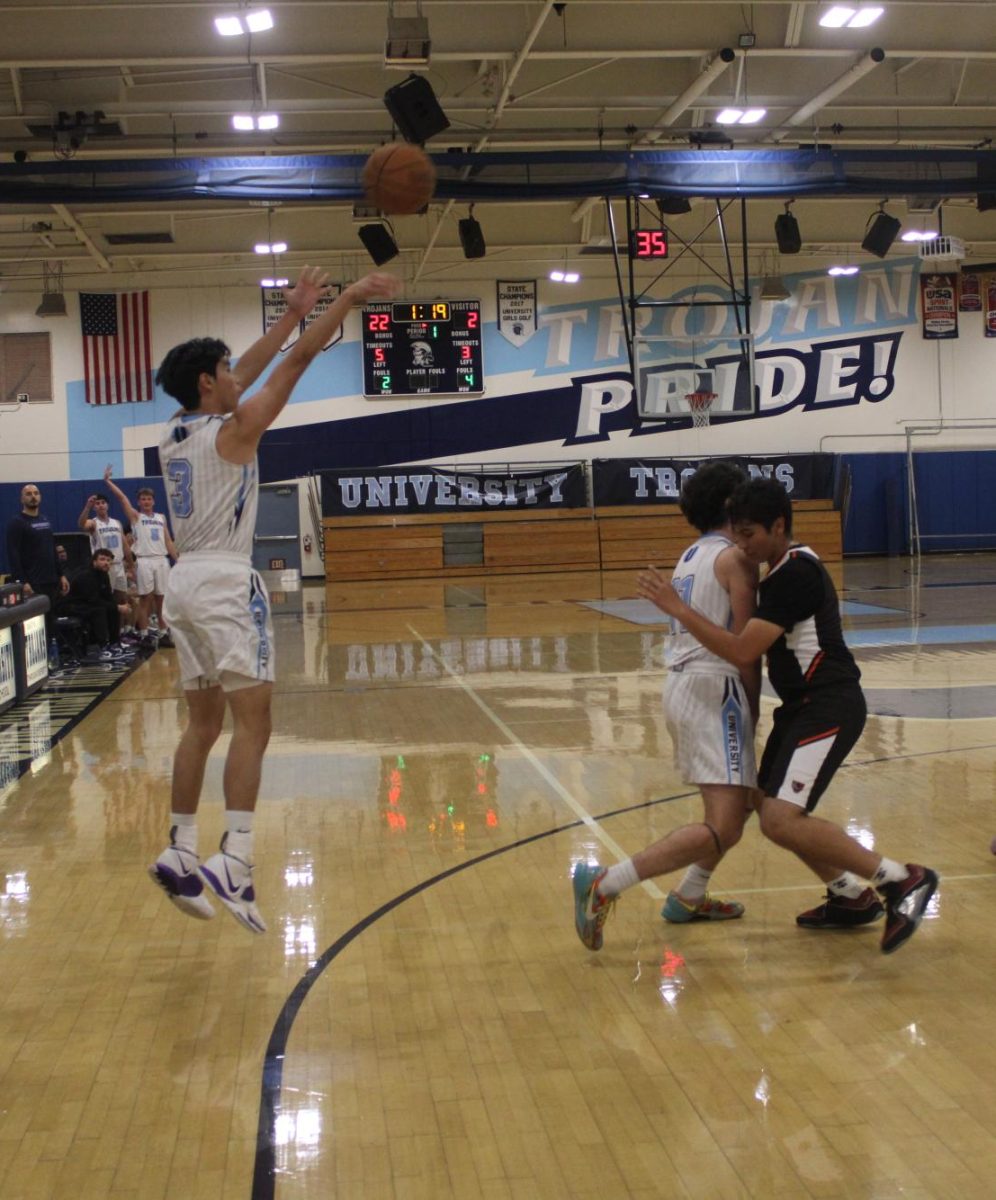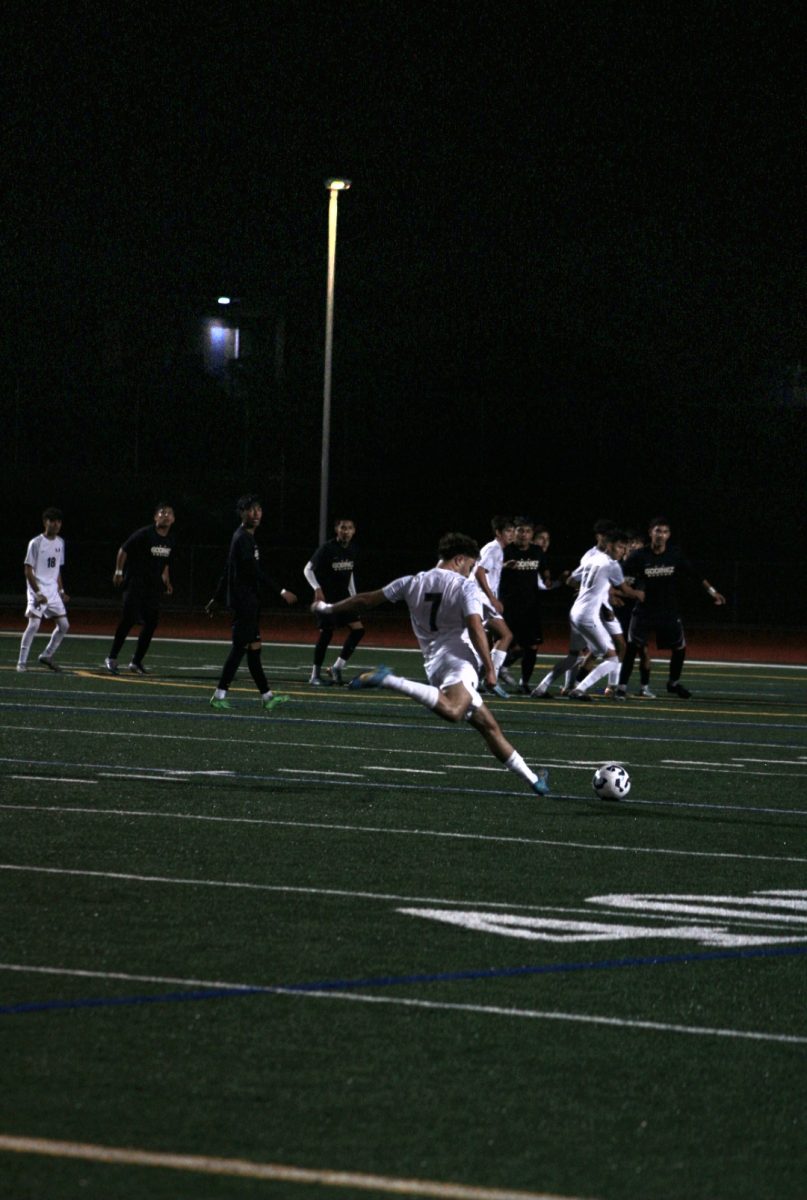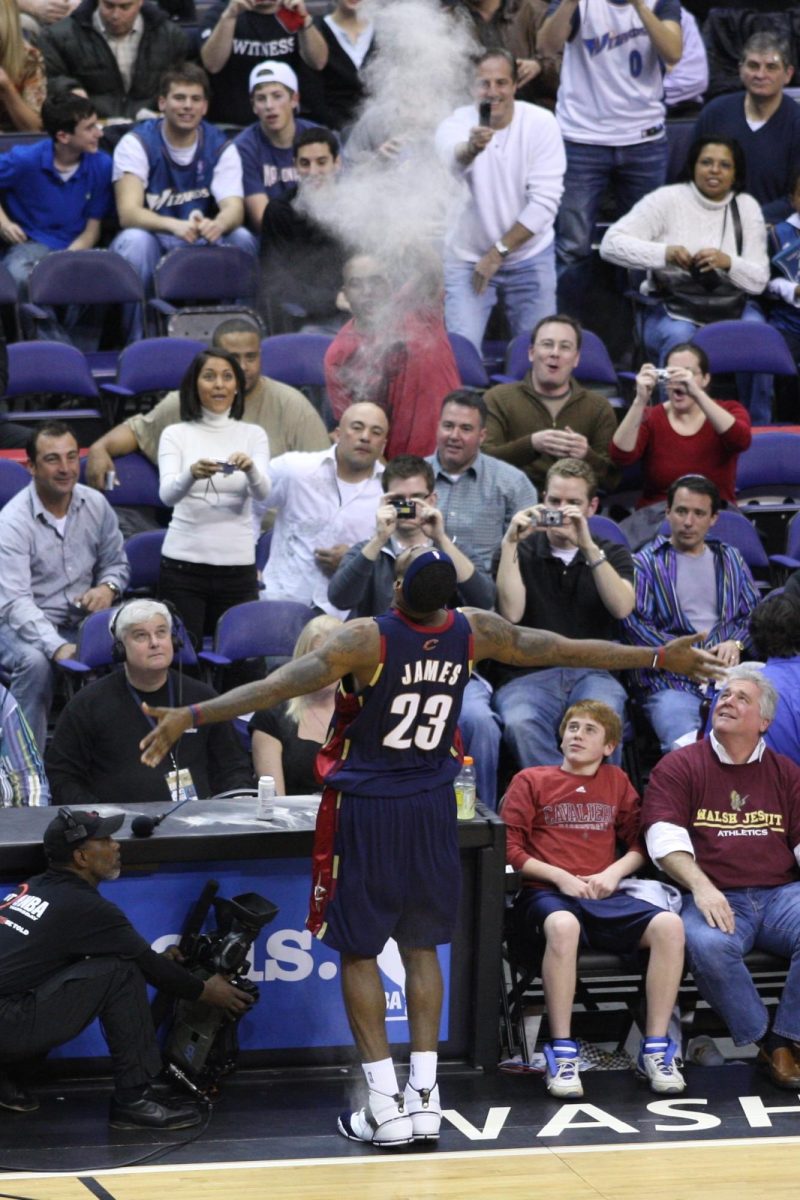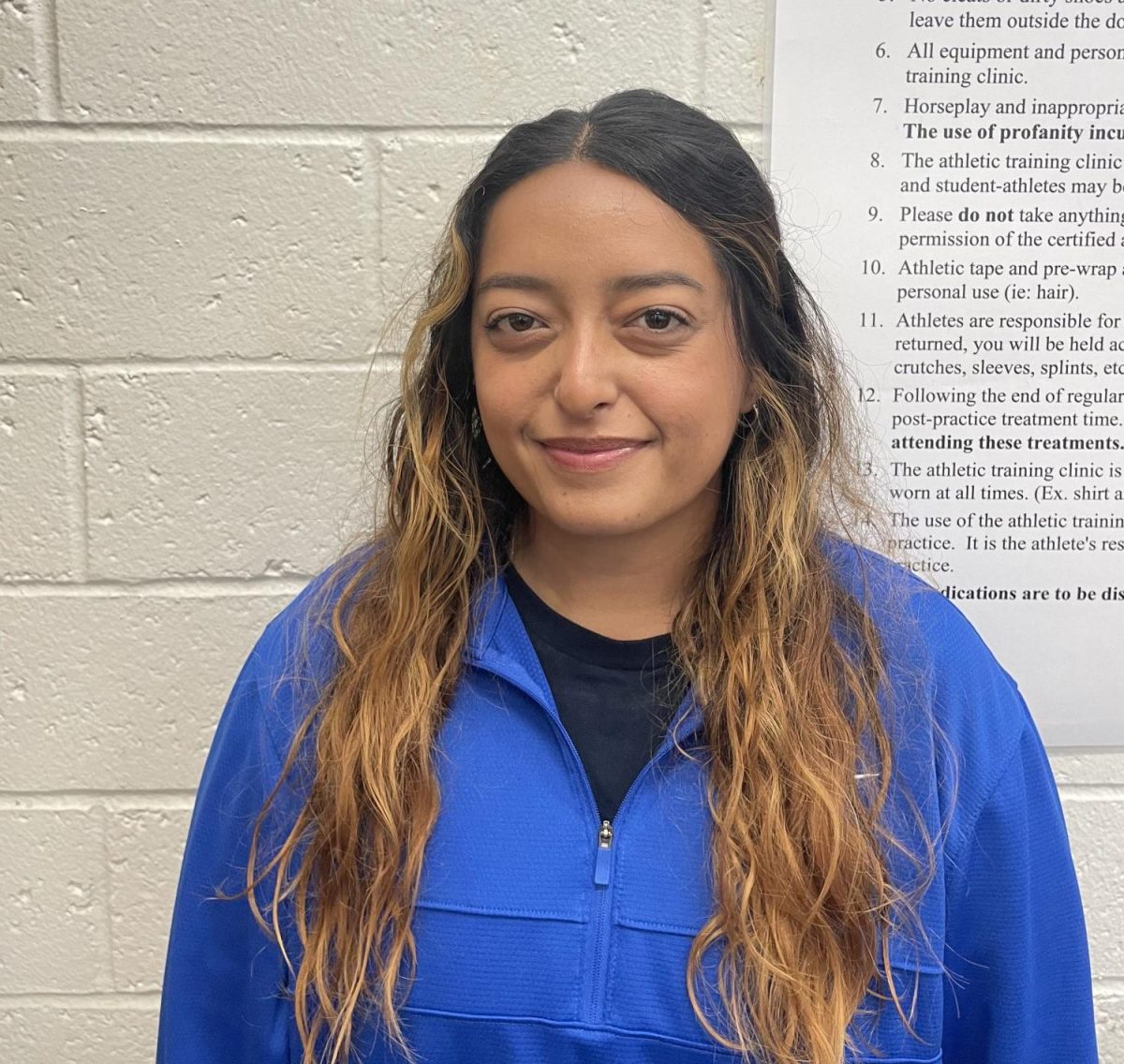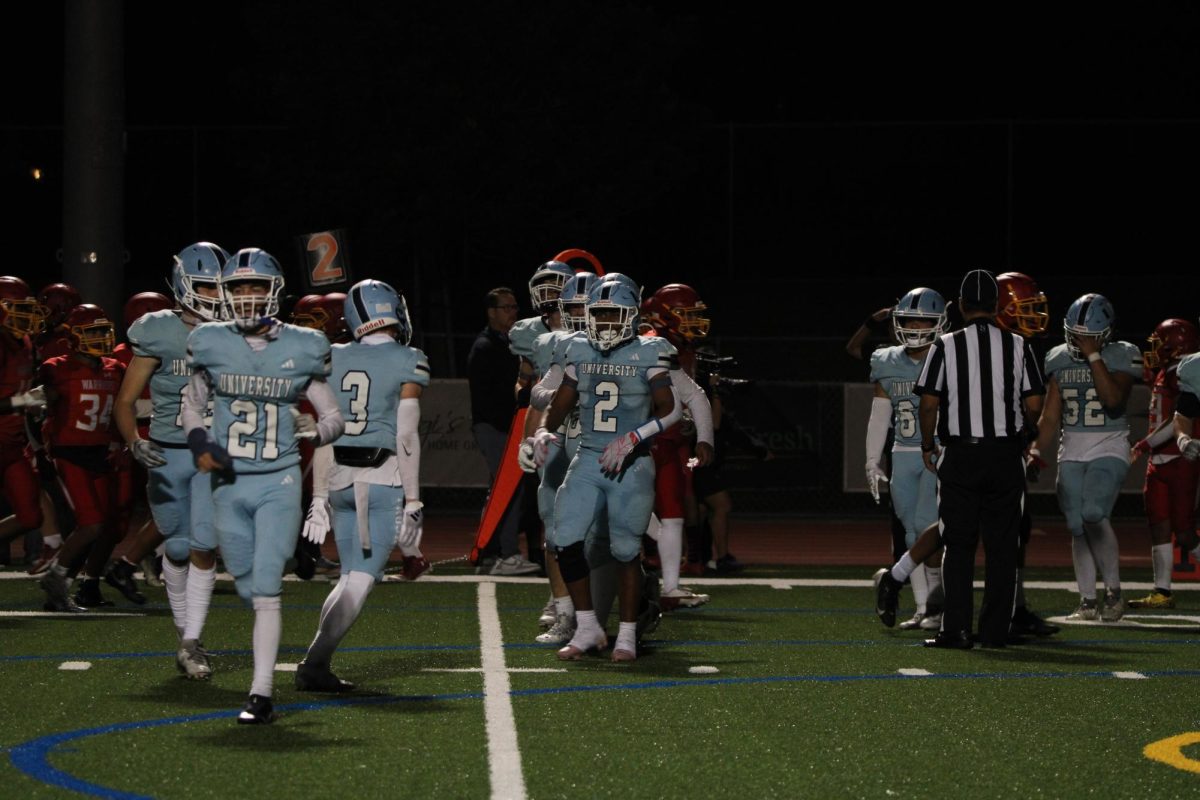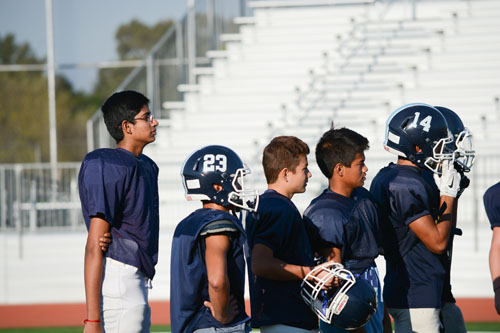
By SHIVAM SUDAME
Staff Writer
I think everyone has done it. I’ve done it so many times. When Kobe pushed Brandon Roy off the court, turned half way around, and rose up for his famous corner three, I leaped with him. When Neon Deion high-stepped his way to pay dirt, I swayed with him the best I could. Pretending that I am an athlete has been a major part of my life. So when I was given the opportunity to practice with the varsity football team, I took it immediately.
A little background on myself: my name is Shivam Sudame, a junior. I am 6 foot 2 inches, approximately 140 lb. (stop laughing), of Indian descent, and built with the body structure of a stick of bamboo. I have average speed, and an average vertical. I am the epitome of an Average Joe, and the complete opposite of a football player. An average 6’2’’ male is around 180 pounds. Football players are certainly more than that. So going in, I was absolutely terrified. Now, I do have relatively large hands, so I thought perhaps I could play wide receiver or cornerback. That way, hopefully my strength (or lack thereof) wouldn’t get exposed. I also thought I knew all the routes I would ever have to run. I played enough years of Madden to know that a bench formation is going to have a corner route and an out route. I knew that rolling out the pocket with my halfback leading the way with a wheel route meant that I could always either scramble or dump it off to my halfback. Or at least I thought I knew. Unfortunately, as realistic as the snowfall in Madden may be, the gameplay mechanics are far too exploitable. As I had feared, the real thing turned out to be much more difficult.
But before any play can start, the athletes need to gear up. In the case of football, gearing up is like no other sport. To help me suit up, I was sent to the team’s equipment manager, Ivan Magdaleno (Athletics Dept.). Ivan was unbelievable. He knew exactly what size I would need just from looking at me, and he fit me up with everything the players would wear. Now, although it may not look like it, the gear is extremely constricting and uncomfortable. How the players move so fluidly is beyond me. But it isn’t just the constriction of mobility that makes it difficult; it’s also the weight. The helmet by itself is fifteen pounds; tack on shoulder pads (which are about ten pounds) and other gear like cleats, leg pads, etc., and the weight adds up to about thirty pounds. That’s equivalent to running with a three-year-old strapped onto you. But Ivan fitted me right, making sure my helmet had the perfect amount of air pushing on to my jawbone, fitting on my shoulder pads, and demonstrating how to put leg pads into the pants. I may not have been, but I certainly looked ready to play some football.
If I learned one thing, it’s that size doesn’t necessarily matter; it depends on the position. But one behemoth I saw was Onyexx Chukwumerije (Jr.). Playing defensive end, he definitely needs size, which he has in abundance. Keep in mind Onyexx and I are the same height (6’2”). He weighs 212. I weigh 140. I wasn’t kidding when I said I was undersized. Watching him and some of the other linemen collide was like, well, nothing else. They didn’t just run into each other blindly; they had technique, precision, and calculation before the snap. But it’s not just size, it’s also about strength. Take, for example, Farbod Memarian (Jr.). He has the same build as me: tall, lanky, and skinny. But looks are very deceiving in his case. He ran hard, and with power. As a wide receiver, he had the ability to shake off the early press and get a quick release, but followed it up with quick feet to run his routes. As for me, my head hurt because of the helmet, I couldn’t move because of the padding, and I wasn’t even allowed to sit on a bench per the coach’s rules for all players.
A lot more goes into playing a position than you may think. For example, I got to talk to Thomas Keeling (So.) about being a quarterback. The thing that stuck out to me was how analytical and sharp they need to be. First, they need to remember all of the plays in the playbook, a number which skyrockets to triple digits. Each one of these plays has multiple routes that need to be run at specific distances and times, and the QB has to remember all of them. Pre-snap, they need to guess what the defense is running – maybe a safety blitz, maybe a Cover 6 zone, maybe one of many other options – and maintain or change the play to fit the defense. Once the ball is snapped, QBs have to make the post-snap read. They have to survey the field, envision the routes the receivers are running, find the gap, and make the throw, all while 200 pound goliaths lumber at them. Taking into account pocket presence, arm strength (Thomas can throw a ball around 40 yards), and reading, I think it’s safe to say that there’s a reason why quarterback is one of the most recognizable and prominent positions in football.
But there are a few that stay relatively unnoticed. One of these is the kicker. I got a chance to speak with Nick Loveland (Sr.), the field goal kicker for the Trojans. Nick was a gentle, soft-spoken guy, who had a rocket of a boot. I watched him kicking field goals from the sideline at a terrible angle because the field was being used by the receiving corps and the defensive backs. He must have been kicking around 30 to 35-yard field goals, yet he still managed to squeeze countless kicks through that small margin. He told me that from snap to kick, kickers have maybe three seconds max to kick it without getting blocked. Three seconds. People also don’t realize the distance of a field goal. If a team drives to the 30-yard-line, the kicker can’t kick a 30-yard field goal. Taking into account that the kicker lines up seven yards behind the line of scrimmage and the field goal posts are lined up at the back of the ten-foot end zone, the kick becomes a 47-yarder. Not as easy as you thought, eh?
Football is a different monster. It is a beast that can only be tackled (pun intended) by the fittest players, both physically and mentally. It may seem like they are doing ordinary things, but what they are doing is extraordinary. And one last thing. That field seems a lot bigger once you’re on it. I can see why they’re always asking for Trojan Army support; they need it to win just as much as we need them to win. I’m a writer, not an athlete, but athletes are still human. And that support could mean the difference between a W and a L. So football athletes, I salute you. I commend you for what you’re doing, and wish you luck in continuing it.
In the meantime, I’ll stick to writing.
Attempting Athletics: Football
November 10, 2016

0
Tags:
Donate to Sword & Shield
$180
$1000
Contributed
Our Goal
Your donation will support the student journalists of University High School. Your contribution will allow us to purchase equipment and cover our annual website hosting costs.
More to Discover








